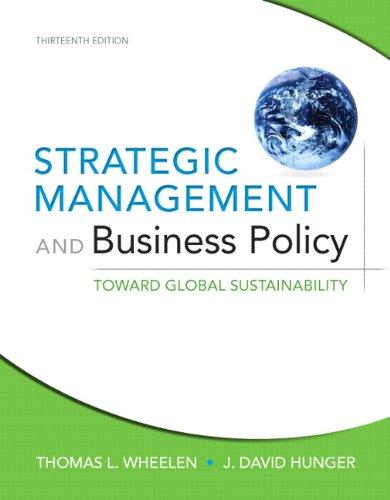Question
Select the letter that best represents your choice. 1. Currency includes a) Paper money and coins. b) Paper money, coins, and checks. c) Paper money
Select the letter that best represents your choice.
1. Currency includes a) Paper money and coins. b) Paper money, coins, and checks. c) Paper money and checks. d) Paper money, coins, checks, and savings deposits.
2. Poorly performing financial markets can be the cause of a) Wealth. b) Poverty. c) Financial stability. d) Financial expansion.
3. High interest rates might ________ purchasing a house or car but at the same time high interest
rates might ________ saving. a) Discourage; encourage b) Discourage; discourage c) Encourage; encourage d) Encourage; discourage
4. Stock prices are a) Relatively stable trending upward at a steady pace. b) Relatively stable trending downward at a moderate rate. c) Extremely volatile. d) Unstable trending downward at a moderate rate.
5. Financial institutions search for ________ has resulted in many financial innovations. a) Higher profits b) Regulations c) Respect d) Higher risk
6. Which of the following is NOT a financial institution? a) A life insurance company b) A pension fund c) A credit union d) A business college
7. The delivery of financial services electronically is called a) E-business. b) E-commerce. c) E-finance. d) E-possible
8. Money is defined as a) Bills of exchange. b) Anything that is generally accepted in payment for goods or services or in the repayment of debt. c) A risk-free repository of spending power. d) The unrecognized liability of governments.
9. Which of the following statements about the characteristics of debt and equities is TRUE? a) They can both be long-term financial instruments. b) Bond holders are residual claimants. c) The income from bonds is typically more variable than that from equities. d) Bonds pay dividends
10. Long-term debt has a maturity that is a) Between one and ten years. b) Less than a year. c) Between five and ten years. d) Ten years or longer.
11. When I purchase ________, I own a portion of a firm and have the right to vote on issues important
to the firm and to elect its directors. a) Bonds b) Bills c) Notes d) Stock
12. ________ work in the secondary markets matching buyers with sellers of securities. a) Dealers b) Underwriters c) Brokers d) Claimants
13. An important function of secondary markets is to a) Make it easier to sell financial instruments to raise funds. b) Raise funds for corporations through the sale of securities. c) Make it easier for governments to raise taxes. d) create a market for newly constructed houses.
14. Secondary markets make financial instruments more a) Solid. b) Vapid. c) Liquid. d) Risky.
15. A financial market in which only short-term debt instruments are traded is called the ________
market. a) Bond b) Money c) Capital d) Stock
16. Equity and debt instruments with maturities greater than one year are called ________ market
instruments. a) Capital b) Money c) Federal
17. If bad credit risks are the ones who most actively seek loans and, therefore, receive them from
financial intermediaries, then financial intermediaries face the problem of a) Moral hazard. b) Adverse selection. c) Free-riding. d) Costly state verification
18. An example of the problem of ________ is when a corporation uses the funds raised from selling
bonds to fund corporate expansion to pay for Caribbean cruises for all of its employees and their
families. a) Adverse selection b) Moral hazard c) Risk sharing d) Credit risk
19. Financial intermediaries have developed expertise in monitoring the parties they lend to, thus
reducing losses due toa) Moral hazard. b) Adverse selection. c) Free-riding. d) Economies of scope.
20. What is the present value of $500.00 to be paid in two years if the interest rate is 5 percent? a) $453.51 b) $500.00 c) $476.25 d) $550.00
21. To claim that a lottery winner who is to receive $1 million per year for twenty years has won $20
million ignores the process of a) Face value. b) Par value. c) Deflation. d) Discounting the future.
22. If a $5,000 coupon bond has a coupon rate of 13 percent, then the coupon payment every year is a) $650. b) $1,300. c) $130. d) $13.
23. A $1,000 face value coupon bond with a $60 coupon payment every year has a coupon rate ofa) 0.6 percent. b) 5 percent. c) 6 percent. d) 10 percent.
24. If the amount payable in two years is $2,420 for a simple loan at 10 percent interest, the loan
amount is a) $1,000. b) $1,210. c) $2,000. d) $2,200.
25. The present value of a fixed-payment loan is calculated as the ________ of the present value of all
cash flow payments. a) Sum b) Difference c) Multiple d) Log
Step by Step Solution
There are 3 Steps involved in it
Step: 1

Get Instant Access to Expert-Tailored Solutions
See step-by-step solutions with expert insights and AI powered tools for academic success
Step: 2

Step: 3

Ace Your Homework with AI
Get the answers you need in no time with our AI-driven, step-by-step assistance
Get Started


